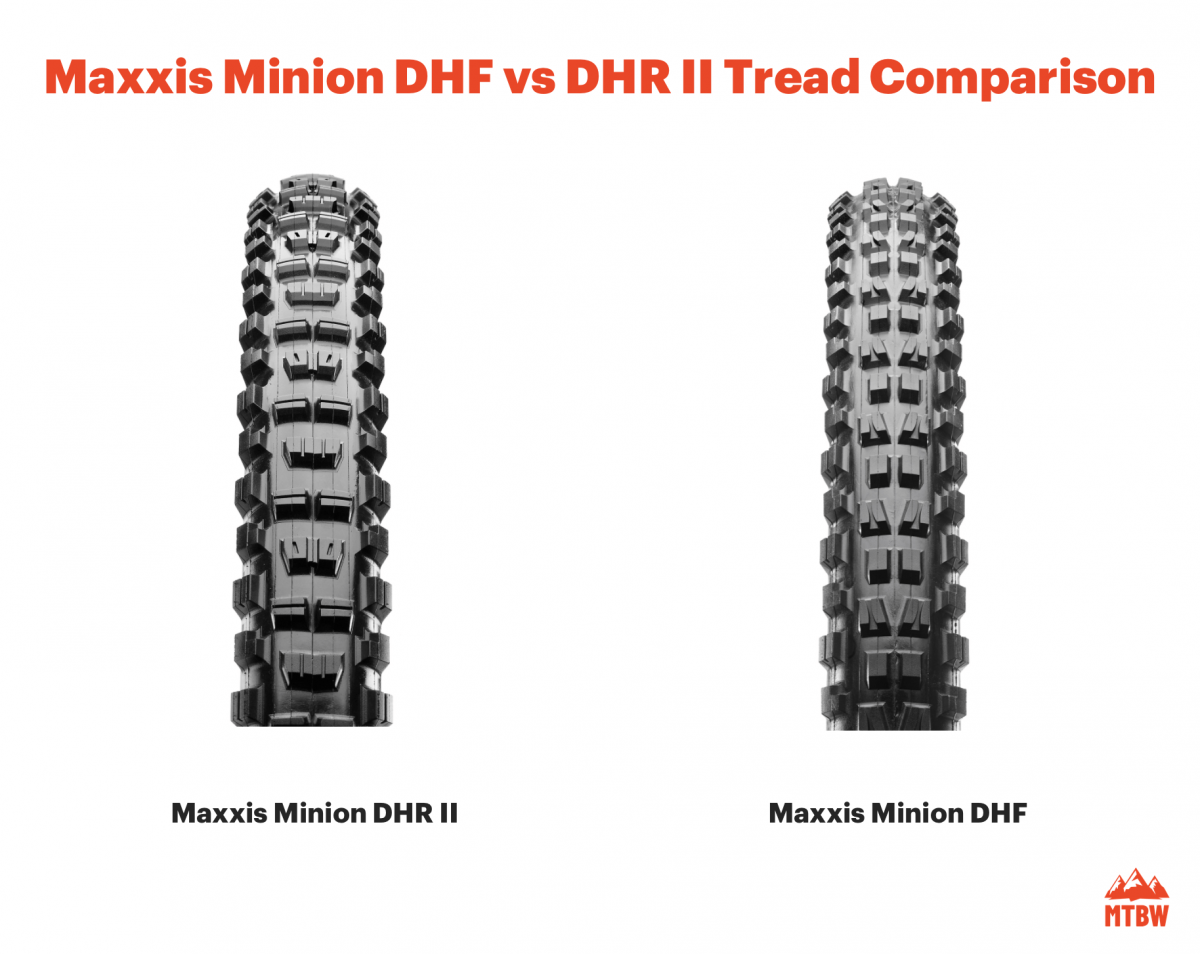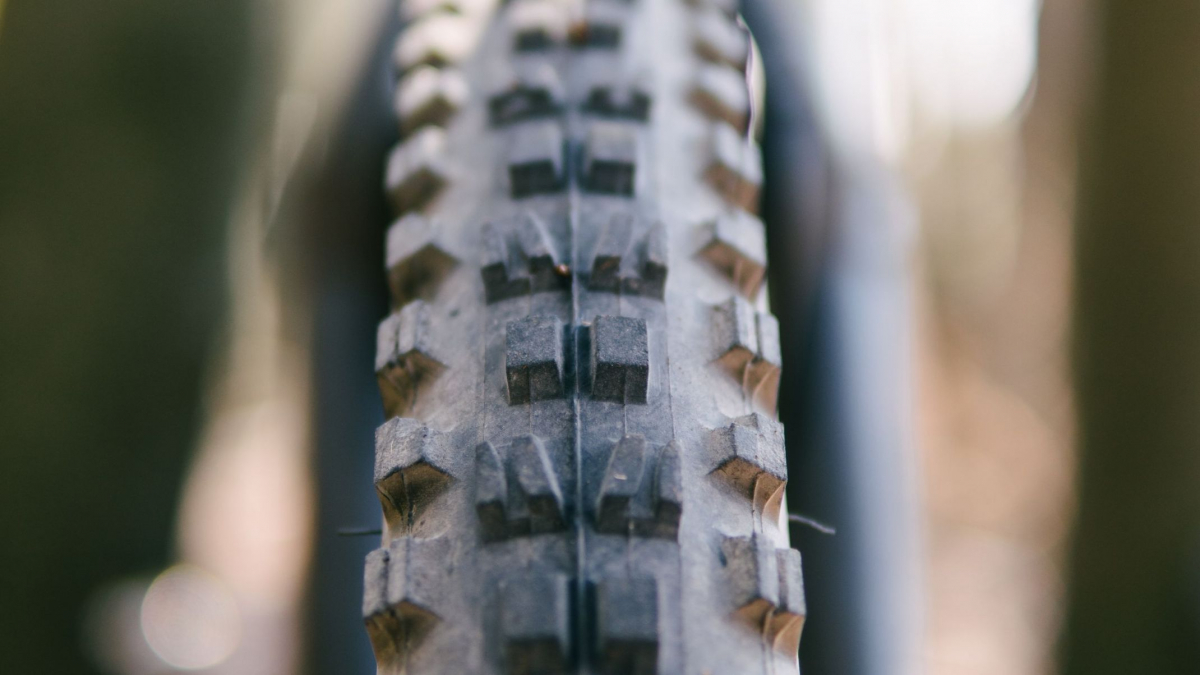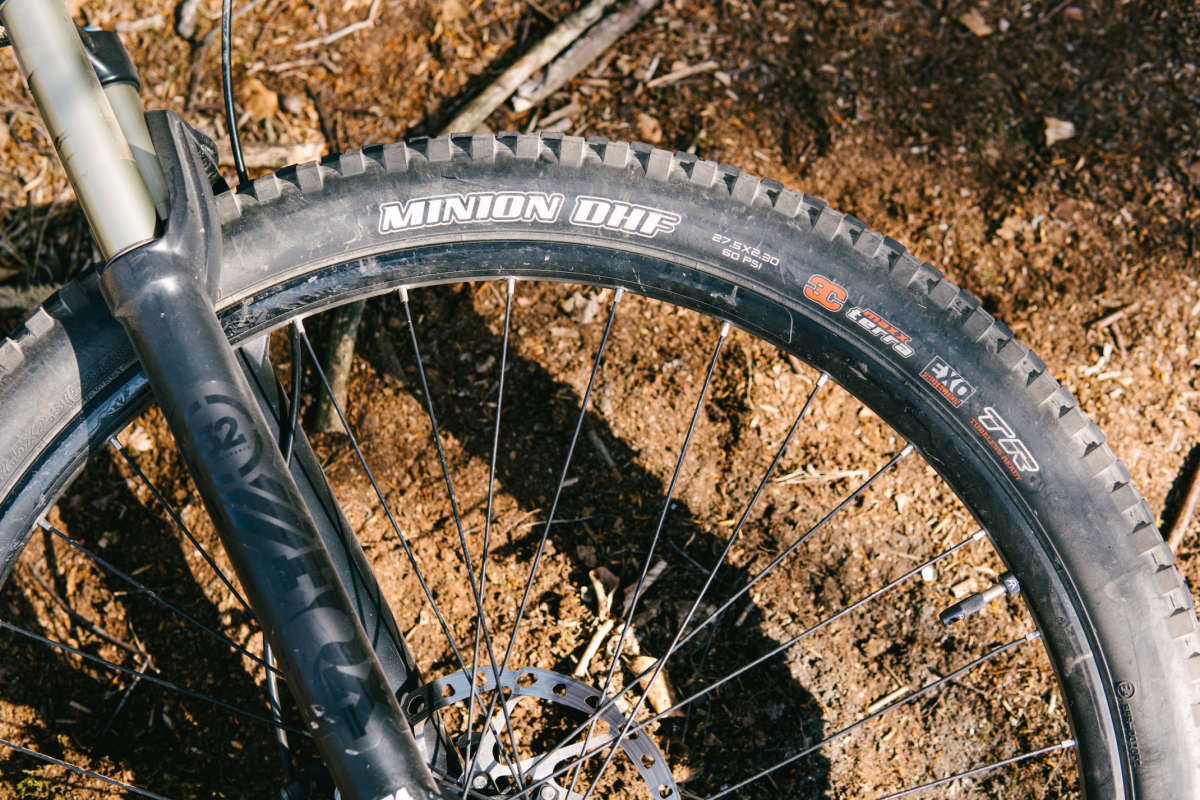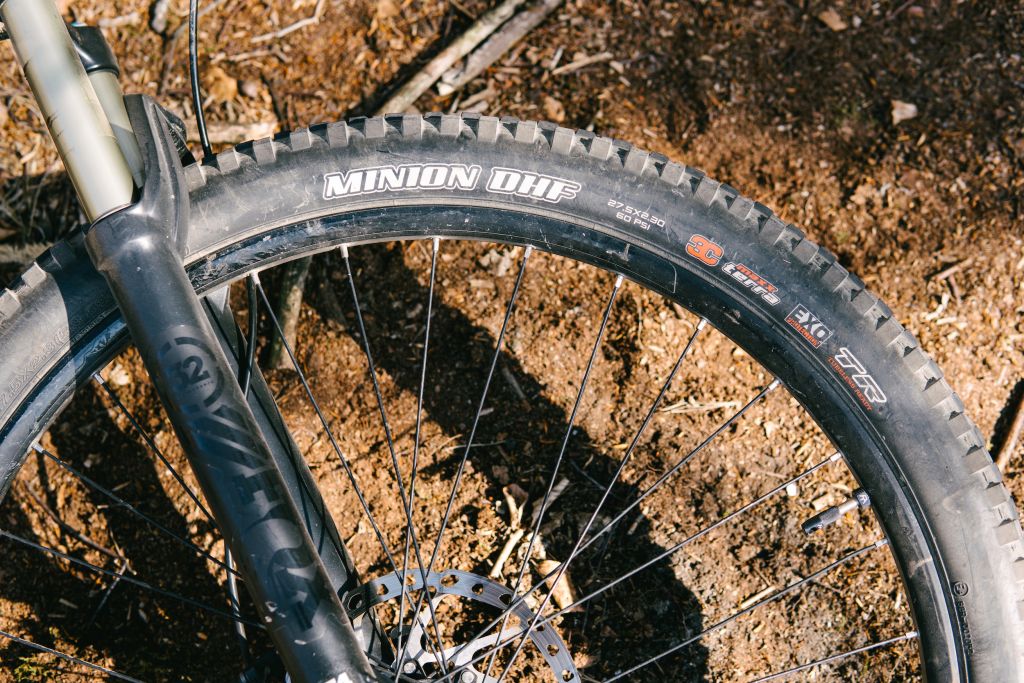I was recently looking for a new set of tires for my mountain bike. I asked around for recommendations, and one name kept coming up - the Maxxis Minion. The Minion is one of the most popular all-mountain tires out there. They offer a great combination of predictability, good breaking performance, and low rolling resistance in their category.
After reading all the positive reviews, I was sold. So I went online and started looking for them only to realize the lineup is pretty complicated. A lot of sizes a lot of 3-letter words like EXO and 3C and two entirely different types, the Minion DHF and DHR II. So, to save you from the hassle of researching all this, here's a guide to picking the right Maxxis Minion tire for your bike.
What's the difference between Maxxis Minion DHF and DHR II?
Depending on who you ask, DHF either stands for Downhill Front or Freeride, and DHR for Downhill Rear or Race. Regardless of the naming convention, people have been running these tires both in the front and in the back of their bikes. So what's the difference?
Both tires have the same L-shaped side knob design. Where they differ is in the design of the center knobs. The DHF's center knobs are closer to each other and also closer to the side knobs, meaning they have outstanding traction in dry and semi-dry conditions. The downside is performance in muddy situations because the dense center knobs do a worse job at clearing mud.
The center knobs on the DHR II have a more paddle-like design making the tire better at very steep techy climbs as well as giving it better breaking traction in steep terrain. It's also a bit lighter than the DHF, it rolls faster, and because the center knobs are more spread out, it clears mud better than the DHF. With that said, the DHF is a more precise directional tire.

As for which one is better, that's really hard to tell. It depends on your riding style, the type of terrain, and the conditions you find yourself riding most often. Both are great tires, both work well in the front and in the back. I've seen people run the DHF in the front and the DHR II in the back and swear by this combo. Greg Minnaar won the South Africa World Cup running the DHR II front and back, a lot of people run the DHF on both ends of their bike and are super happy with their setup. This just goes to show that there is no wrong answer here and the final decision will depend on your personal preference. It's also worth noting that tiers are a very personal thing and people tend to feel a certain way about a certain tire. It's very hard to prove the superiority of one over the other, especially with two tires that are so closely related.

Sizing
The next big thing to consider is sizing. Obviously, there is the wheel size. Maxxis makes both the DHF and DHR II in sizes 24, 26, 27.5, and 29. Where it gets tricky is in the second measurement - the width. That's the second number next to the wheel size (for example 27.5x2.30). Minions come in a range of widths from 2.30 to 2.60.
The width of your tire is going to depend on two things. How much space does your frame allow (if you pick a tire that's too wide, it might not fit on your frame), and what performance are you looking for in the tire. Generally, narrower tires will roll faster but will provide less traction. Some people like to run a narrower tire in the back, that rolls nice and fast and a wider one in the front for better control. Wider tires allow you to run on lower tire pressures, which in certain situations, can improve handling and ride quality. A good rule of thumb is to stay close to the tire width that came originally with your bike.

Wide Trail (WT)
To make things a bit more complicated, some Minions are also labeled as WT (for example, 29x2.60WT). WT stands for Wide Trail and is meant for rims with an internal width of 30-35mm. In contrast, a traditional rim will have a width of 21-29mm. WT rims have recently become popular because they allow for a wider tire profile, which gives you better sidewall support and allows you to run lower tire pressures. However, this also means that running standard tires on a WT rim would result in a misshaped tire that does not engage well with the terrain. The diagram below shows a comparison:

Casings
A tire casing is the shell of the tire and protects it from punctures. Both Minion DHF and DHR II offer the following casing types:
- EXO - compared to traditional single-ply casings, it has an additional EXO layer that provides good puncture protection but isn't too heavy
- EXO+ is an upgrade to the EXO casing with an added Maxxis SilkShield protection layer. It's meant for more aggressive riding, without adding too much extra weight.
- Double Down is Maxxi's newest casing that fills the gap between an EXO+ and a Downhill casing. It's very durable, but not as heavy as the Downhill version.
- Downhill is the toughest casing available for the Minion series. As the name indicates, it's meant for downhill racing. They feature reinforced dual-ply sidewalls and a butyl insert for ultimate performance, but you'll pay the price in weight.

Tire Bead
You will also find two different bead options. Beads are the edge of the tire, that sits on the wheel. Maxxis offers the Minion with a Foldable and a Wire bead. The foldable bead is made from a Kevlar compound and allows the tire to be folded when packaged making it lighter and easier to transport. The wire bead is just a wire that runs around the edge of the tire. Wire beads will be cheaper but heavier than foldable ones.
Tubeless Ready (TR)
When a tire is labeled TR, it means that the casing has been constructed to allow for a tubeless installation. Tubeless is very popular because it allows the tire to run at lower pressures, and the sealant that's inside the tire heals up small punctures.
Compounds
Besides the tread design, tire compounds are what make or break a good tire. Thankfully, Maxxis is pretty good at both treads and compounds. The Minion series offers a variety of compounds ranging from a single compound that offers a long-lasting tire to complex 3 compound mixes. I'll explain what is what below:
- Single Compound is one compound throughout the tread that is long-lasting but not as grippy as more sophisticated compounds
- Dual Compound tires have a harder rubber towards the base of the tread and a softer one towards the top of the tire. This is great for hard-wearing rear tires as it offers a good compromise between rolling resistance and longevity.
- 3C Maxx Terra is a mix of 3 compounds commonly used on trail and enduro bikes that provide better treadwear and less rolling resistance than Maxx Grip.
- 3C Maxx Grip is also a 3-compound mix that's aimed at downhill usage. It offers the ultimate in grip and slow rebound properties for great traction.
- Super Tacky is a very soft single compound tire meant for downhill action. It offers low rebound and high traction, especially in dry conditions. It will, however, wear off faster than a 3C compound.
You can find all the specs of available DHF and DHR II tires on the Maxxis website.



